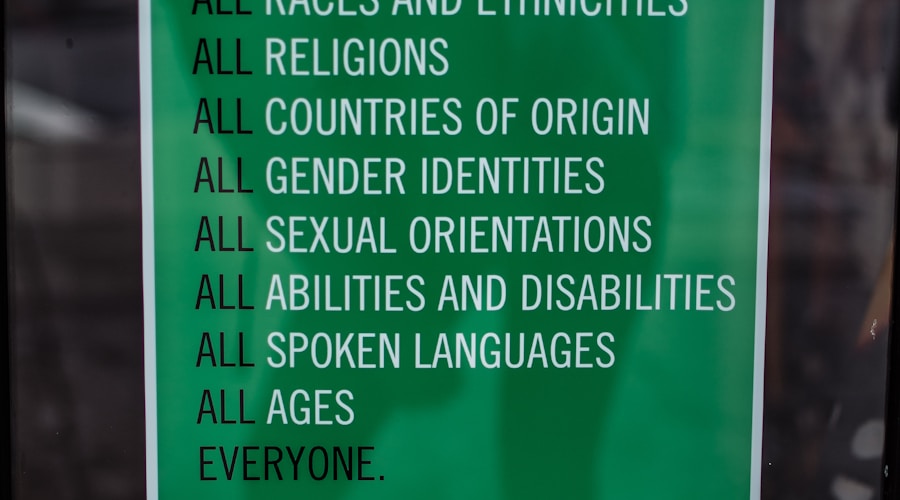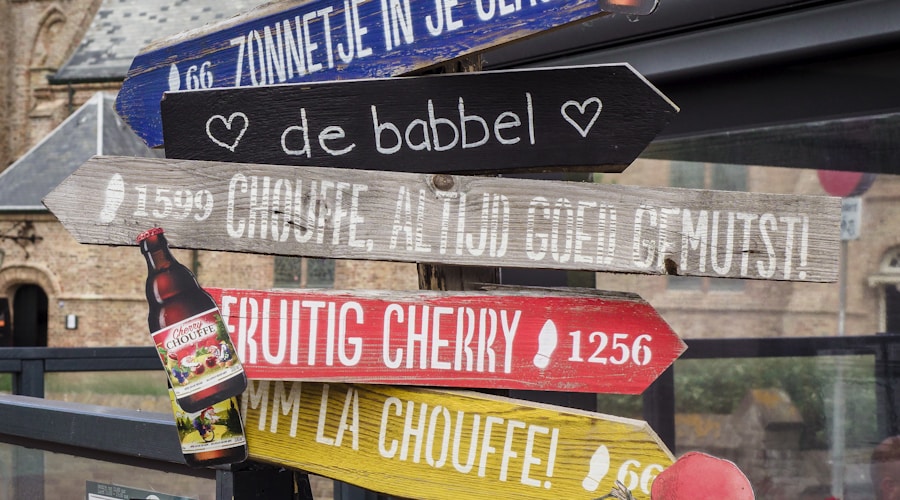Welcome to our guide on creating shared values in a diverse group! Whether you're part of a team at work, a community organization, or a volunteer group, it can be both challenging and rewarding to work with individuals from different backgrounds, cultures, and perspectives. This article will provide you with practical techniques and strategies for fostering unity and collaboration within your diverse group.
As you go through this guide, keep in mind the words of Maya Angelou: "We all should know that diversity makes for a rich tapestry, and we must understand that all the threads of the tapestry are equal in value no matter their color." Embracing diversity and creating a sense of unity among diverse individuals is not just about checking off boxes or fulfilling a requirement; it's about recognizing the unique value that each person brings to the table and finding ways to work together harmoniously.
Are you ready to embark on this journey of understanding, collaboration, and celebration of diversity? Let's dive in and explore the techniques for creating shared values in your diverse group. Remember, the strength of a diverse group lies in the willingness to learn from each other and build something meaningful together.
Understanding Diversity in Groups
When working with a diverse group of individuals, it's essential to recognize and embrace the differences that each person brings to the table. Author Dave Ramsey once said, "Unity is not uniformity; it is diversity with a common purpose."
Embrace Differences
You must understand that each person in the group comes from a unique background, culture, and experiences. As Dr. Maya Angelou, an American author and poet, once said, "We all should know that diversity makes for a rich tapestry, and we must understand that all the threads of the tapestry are equal in value no matter their color."
Value Diverse Perspectives
Each person's viewpoint is valuable and should be respected. Consider this quote from Vernā Myers, a diversity advocate: "Diversity is being invited to the party. Inclusion is being asked to dance."
Foster Inclusivity
By understanding and appreciating the diversity within the group, you can create an environment where everyone feels included and heard. As businesswoman Mellody Hobson said, "Diversity is being invited to the party; inclusion is being asked to dance."
Foster Empathy
It's important to put yourself in the shoes of your peers and recognize the challenges they may face as a result of their background or cultural differences. As Barack Obama once said, "The strongest democracies flourish from frequent and lively debate, but they endure when people of every background and belief find a way to live together."
Acknowledge Privilege
Recognize your own privilege and use it to amplify the voices of those who may not have the same opportunities. As author Malcom Gladwell said, "The key to good decision making is not knowledge. It is understanding. We are swimming in the former. We are desperately lacking in the latter."
By embracing diversity in your group, not only do you create a more inclusive environment, but you also open the doors to new perspectives and innovative ideas.
Establishing Common Goals
When you are working within a diverse group, one of the most effective ways to foster unity is by establishing common goals. Setting common goals allows everyone in the group to work towards a shared objective, creating a sense of purpose and camaraderie.
Identify the Common Purpose: To start, you must identify a common purpose that everyone in the group can rally around. This could be a specific project, a target to achieve, or a problem to solve. As leadership expert John C. Maxwell said, "A dream is the seed of a goal."
Align Individual Goals: Once you have established a common purpose, it is important to align individual goals with the group goal. This will ensure that each person's efforts contribute to the overall success of the group. Author Stephen Covey emphasizes the importance of this, stating, "Strength lies in differences, not in similarities."
Communicate the Goals Clearly: Make sure that the common goals are communicated clearly to everyone in the group. Use simple and relatable language to ensure that everyone understands and commits to the objectives. Communication expert Nancy Duarte stresses, "If you can't explain it simply, you don't understand it well enough."
In setting common goals, you provide a unifying focus that allows diverse individuals to see themselves as part of a larger purpose. This fosters a sense of belonging and collaboration, paving the way for unity within the group. As Helen Keller once said, "Alone we can do so little; together we can do so much."

Building Trust Through Open Dialogue
Building trust within a diverse group is crucial for fostering unity and collaboration. Open dialogue can help in establishing trust and breaking down barriers that may hinder effective communication. When you engage in open dialogue, you encourage everyone to share their thoughts, concerns, and ideas without fear of judgment. This can lead to a deeper understanding of each other and help in building a sense of community within the group.
When you listen to others and communicate openly, you create an environment where people feel valued and respected. This can help in bridging the gap between individuals from different backgrounds and perspectives. As a result, it can lead to greater cohesion and a stronger sense of unity within the group.
According to author Stephen Covey, "Trust is the glue of life. It's the most essential ingredient in effective communication. It's the foundational principle that holds all relationships." This quote emphasizes the importance of trust in fostering open dialogue and building strong relationships within a diverse group.
You can build trust through open dialogue by actively listening to others, being empathetic, and showing genuine interest in what they have to say. According to author and motivational speaker, Simon Sinek, "Listening is not about simply hearing the words that are being said but about taking the time to understand how someone feels." This demonstrates the importance of active listening in creating an environment that promotes trust and open dialogue within a diverse group.
By engaging in open dialogue, you allow everyone to feel heard and understood, which can lead to a greater sense of trust and unity. Encouraging open dialogue in your group can help in building bridges between individuals from diverse backgrounds and promoting a culture of respect and understanding.
Respecting Cultural Differences
When working in a diverse group, it's crucial to respect and value the different cultural backgrounds and perspectives of each member. Embracing cultural differences not only enhances the group's creativity and problem-solving abilities but also fosters a sense of inclusion and respect among all members.
One way to respect cultural differences in a group is to actively listen and learn from one another. As a team member, it's important to engage in open-minded conversations and show genuine interest in understanding and appreciating the cultural nuances of your colleagues. This can lead to building strong relationships and trust within the group.
As diversity consultant, Verna Myers, once said, "Diversity is being invited to the party; inclusion is being asked to dance." This quote highlights the importance of not only acknowledging cultural differences but also actively including diverse perspectives in the decision-making and problem-solving processes within the group.
Respecting cultural differences also involves being mindful of culturally sensitive topics and customs. It's essential to be aware of potential cultural taboos and to approach discussions and interactions with sensitivity and respect. This may involve being open to learning about different cultural practices and adjusting your behavior accordingly.
In her book, "Differences Among Us," author Dana Meachen Rau emphasizes the significance of embracing cultural diversity: "Embracing our differences enriches our lives. It gives us insight into new ways of thinking, feeling, and living." This highlights the positive impact of respecting cultural differences in a diverse group.
By respecting cultural differences, you can create an inclusive and welcoming environment where all group members feel valued and respected for their unique perspectives and backgrounds. This, in turn, fosters unity and collaboration within the group.

Encouraging Collaboration and Participation
One of the most effective ways to foster unity in a diverse group is to encourage collaboration and participation. When everyone feels that their voice is heard and valued, it creates a sense of inclusivity and belonging. You can achieve this by creating an open and welcoming environment where everyone feels comfortable sharing their ideas and working together towards common goals.
Ways to encourage collaboration and participation:
Active listening: When someone is speaking, give them your full attention. This validates their contribution and makes them feel respected.
Encourage brainstorming: Create opportunities for group members to share their ideas and thoughts. This can lead to innovative solutions and foster a sense of teamwork.
Recognize and appreciate contributions: When someone makes a valuable contribution, acknowledge it and show appreciation. This makes individuals feel valued and motivated to continue participating.
Foster a team mentality: Encourage a mindset of "we" rather than "I". This creates a sense of unity and shared purpose.
Rotate leadership roles: Giving everyone the opportunity to take on leadership roles can foster a sense of empowerment and shared responsibility.
As business strategist Keith Ferrazzi once said, "The more people feel ownership in an idea, the more they'll be committed to making it work." By encouraging collaboration and participation, you create a shared sense of responsibility and investment in the group's success.
Setting Ground Rules for Interaction
When working in a diverse group, it's important to establish clear and respectful guidelines for communication and interaction. This can help to prevent misunderstandings and foster a sense of unity within the group.
Create a Safe Space for Discussion
One key ground rule for interaction is to create a safe and respectful space for everyone to express their thoughts and feelings. As Maya Angelou once said, "I've learned that people will forget what you said, people will forget what you did, but people will never forget how you made them feel." Acknowledging and valuing each person's perspective can lead to a more cohesive and collaborative environment.
Listen with Intent
Another essential ground rule is active listening. This means truly focusing on what the speaker is saying without interrupting or formulating a response in your mind. As Simon Sinek stated, "Leadership is not about being in charge. It's about taking care of those in your charge." By actively listening to one another, you demonstrate respect and consideration for your fellow group members.
Set Expectations for Communication
It's also important to set expectations for communication within the group. This could include guidelines for language use, tone of voice, and methods for resolving conflicts. As Brené Brown mentioned in her book, Daring Greatly, "Don't shrink. Don't puff up. Just stand your sacred ground." Communicating clear expectations can help to create a supportive and inclusive atmosphere for everyone involved.
By establishing these ground rules for interaction, your diverse group can work together cohesively and respectfully, ultimately leading to shared values and a sense of unity.

Celebrating Achievements Together
Celebrating achievements within a diverse group is essential for fostering unity and building a sense of belonging. It provides a valuable opportunity for everyone to come together, acknowledge individual efforts, and revel in collective success. When you recognize and celebrate the accomplishments of each member, you reinforce the idea that everyone's contributions are valued and essential.
Creating a Positive Atmosphere
One way to celebrate achievements together is by organizing regular group events or gatherings where everyone can be recognized for their hard work. This could be a simple team lunch or a more formal awards ceremony, depending on the nature of the group and the achievements being celebrated. Such events serve as a tangible demonstration of appreciation and can strengthen the bonds between group members.
Acknowledging Individual Efforts
During these celebrations, take the time to highlight specific success stories and commend the unique skills and talents that each member brings to the table. This not only cultivates a culture of respect and appreciation but also encourages others to strive for their own excellence. As Janet D. Stemwedel, a philosopher of science, says, "Acknowledging and celebrating the accomplishments of individuals within the group can make everyone feel valued and motivated."
Celebrating achievements together not only fosters unity within the group but also creates a positive and encouraging environment. By actively recognizing and applauding the efforts of each member, you help build a foundation of mutual respect, understanding, and support. As a result, everyone feels more connected and invested in the group's success.
Conclusion
In conclusion, creating shared values in a diverse group is essential for fostering unity and achieving common goals. By understanding diversity, establishing common goals, building trust, respecting cultural differences, and encouraging collaboration, you can create a strong sense of unity within your group. Setting ground rules for interaction and celebrating achievements together can further solidify the bonds within your group.
Remember, diversity is a strength, not a weakness. As Maya Angelou once said, "In diversity there is beauty and there is strength." Embracing the unique perspectives and experiences of each individual in your group can lead to greater creativity and innovation.
By following the techniques outlined in this article, you can create an environment where every member feels valued and respected. As Nelson Mandela once said, "It is in your hands to create a better world for all who live in it." You have the power to cultivate an inclusive and unified group, where shared values can thrive. Good luck on your journey towards unity and shared values!

2Dave Ramsey, Financial Peace (1992)
3Vernā Myers, "What If I Say the Wrong Thing?" (2014)
4Stephen Covey, "The 7 Habits of Highly Effective People" (1989)
5Simon Sinek, "Leaders Eat Last: Why Some Teams Pull Together and Others Don't" (2014)
6Verna Myers, Diversity Consultant, "Diversity and Inclusion in the Workplace" (2018)
7Dana Meachen Rau, Differences Among Us (2014)
8Keith Ferrazzi, "Who's Got Your Back: The Breakthrough Program to Build Deep, Trusting Relationships That Create Success--and Won't Let You Fail" (2009)
9Maya Angelou, I Know Why the Caged Bird Sings (1969)
10Simon Sinek, Leaders Eat Last (2014)
11Brené Brown, Daring Greatly (2012)
12Janet D. Stemwedel, "Acknowledging and Celebrating Achievements," The Importance of Recognition (2010)